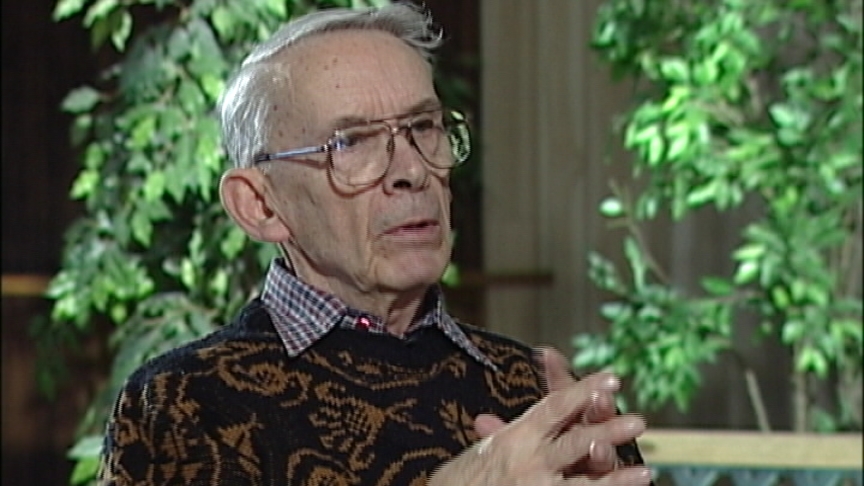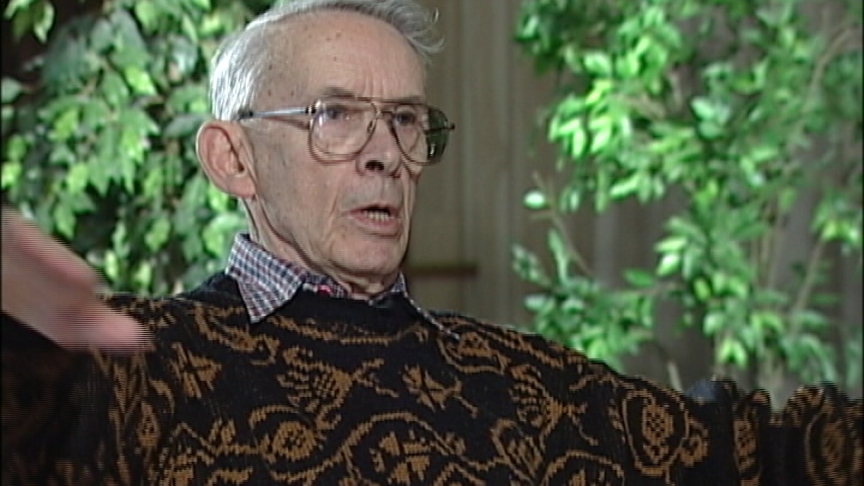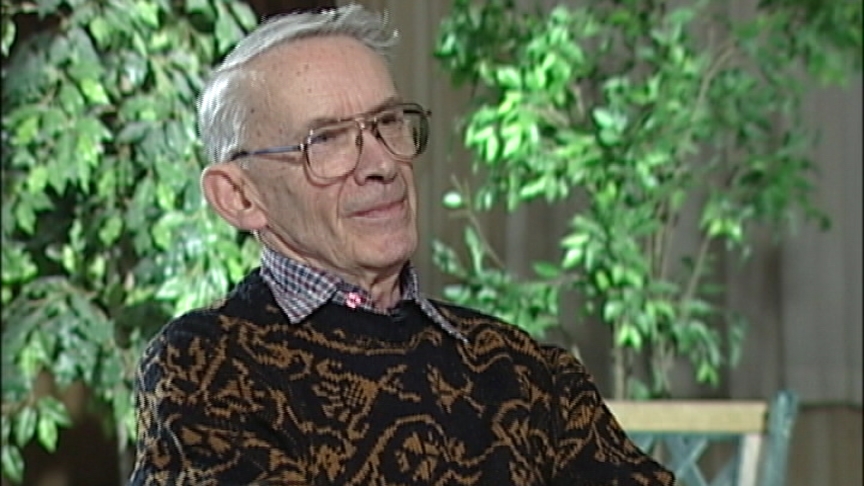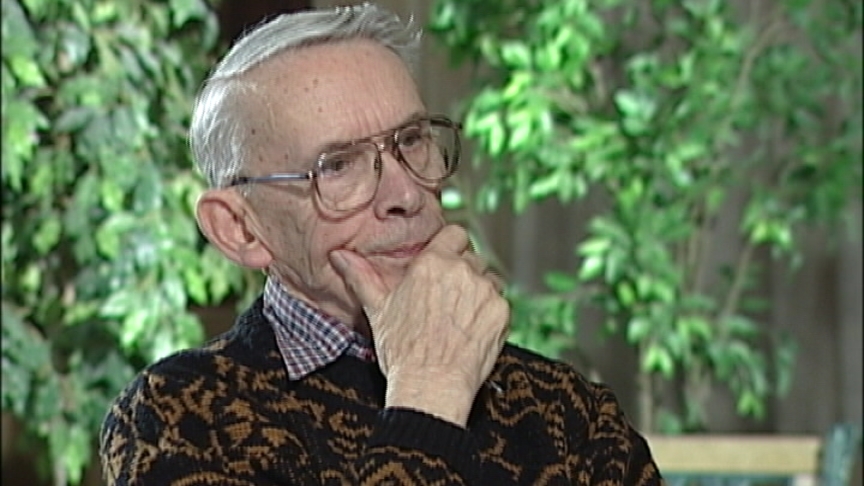They got caught in a terrible snowstorm
Heroes Remember
They got caught in a terrible snowstorm
Transcript
It was tricky to fly a Tiger Moth, now. It was, it was a
double-winged aircraft, and it had a lot of...
Because it was, it was double, a bi-plane it had, it meant
there was more control, so if you moved the stick a little bit,
you went. And there was just enough torque in it to,
on taking off, where you would go one way, and they were,
they were tricky, a little tricky. And then, of course,
most of them went from there into Harvards, which was
fairly advanced. You were into about 650 horsepower aircraft.
It was a good aircraft, but as I'm saying, there was so many
changes, you know, that to take place where you had retra...
retractable undercarriage, and you had variable pitch propellers,
and it had a lot of steam, those things. They were, they were
a good aircraft. But it's just a matter of, as I said, probably
running out of fuel and getting lost. And if, if you did, if you
got lost, well there weren't many... You didn't have long
to get back on track, because you didn't have a lot of fuel.
I would say that we picked up more Ansons, they were
twin engine Ansons and Harvards than anything, yeah.
Some of those old, the Ansons, were just... I don't know how
they stayed up. Well, and there was a Mark 1, Mark 2,
Mark 3, Mark 4, a Mark 5 Anson. That meant they were...
The first Mark 1s were English. They had certain types of
engines which weren't too bad, and... Then we got Mark 2s
that were, had Jacobs. They were not good engines.
And then 3 and 4 and Mark 5, they put Pratt and Whitneys
in them, the same as Harvards, and they were good engines.
So you see, as things went along what happened. This was my
feeling of it anyway. This is what I, I found. Somebody might
disagree with me. I don't think so, 'cause Jacobs, they were,
they were like that. Actually, the old Cheetahs that were in
the old... They were actually pretty durable, and then they
were always trying to improve things, and finally they did.
These Mark 5s were pretty good aircraft, but there were five
of those new ones that went down in that snowstorm.
There were five of them, went up out of Malton, and it got
caught in a terrible snowstorm. You know what they did?
They jumped! The guys jumped and let those things go.
I got pictures. One hit a wood pile, just before a farmer's house
where it could have taken his house and everything. He thought
the world had come to an end. But that's what they did.
They seem to, they saved the pilots, and the aircraft went,
five new ones, you know? Things like that. There was an aircraft
called a Yale and it was a counterpart of a Harvard.
It was like a Harvard, except it had fixed undercarriage and
it had a different engine in it. I think a Wright engine, Wright
Whirlwind and it wasn't as powerful. And they used a,
they used those a lot for training electron..., radio people,
and they were not really a good aircraft. But they, but they had,
they, they... Fortunately, there weren't that many of them.
They were just used for what they had to be used for and there
weren't really many of them. But no, I can't really think of any
with any bad mechanical faults, I wouldn't say. Like, sure, some
of them were maybe a little underpowered, but they, they kept
changing engines as they went along. Put a little better engine
in them, and... I mean, we didn't have very much to do with the,
with of course, fighter aircraft. I mean, an odd one would
come in there, but we were involved in this part of it, yeah.
But a lot of the aircraft like Spitfires, Hurricanes, they were,
they kept increasing the horsepower and changing engines and,
and, as they went along, but we weren't involved in that.
Description
Mr. MacKenzie describes the four different aircraft used for training in Ontario and Quebec.
Grant MacKenzie
Grant Mackenzie was born in Harriston, Ontario, in 1923. He finished school and went to work at a local auto dealer. He attempted to serve overseas as a pilot or electronics technician, but colour blindness prevented him from doing so. Instead, Mr. Mackenzie joined 6 Repair Depot in Trenton, Ontario, where he was an aero engine mechanic. He was also a member of one of the teams tasked with recovering parts from aircraft which crashed during training exercises. Upon completion of his military service, Mr. Mackenzie rejoined the automotive industry.
Meta Data
- Medium:
- Video
- Owner:
- Veterans Affairs Canada
- Duration:
- 04:29
- Person Interviewed:
- Grant MacKenzie
- War, Conflict or Mission:
- Second World War
- Location/Theatre:
- Canada
- Branch:
- Air Force
- Units/Ship:
- 6 Repair Depot
- Rank:
- Leading Aircraftman
- Occupation:
- Aero Engine Mechanic
Related Videos
- Date modified:






